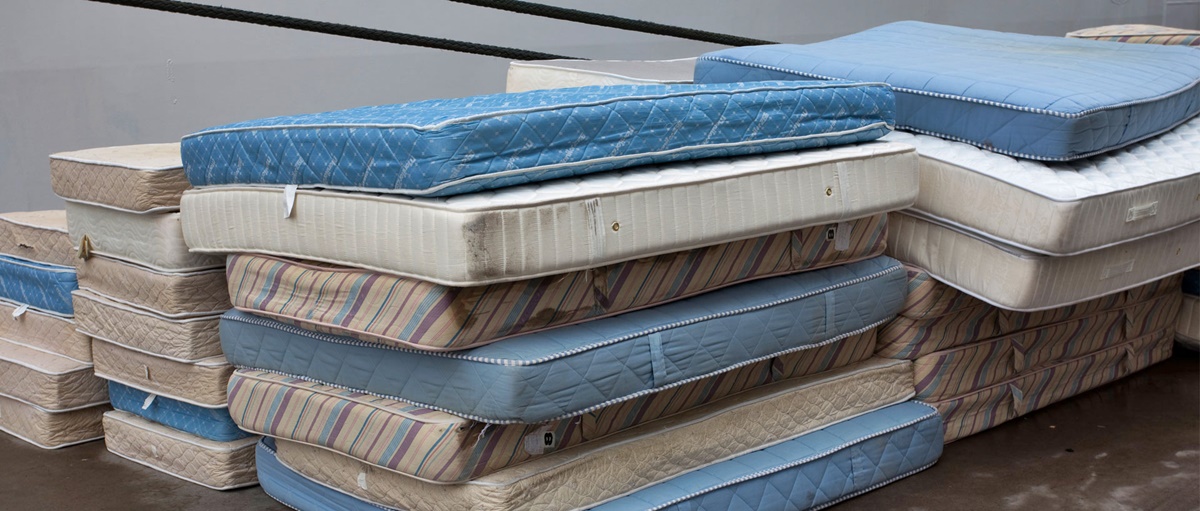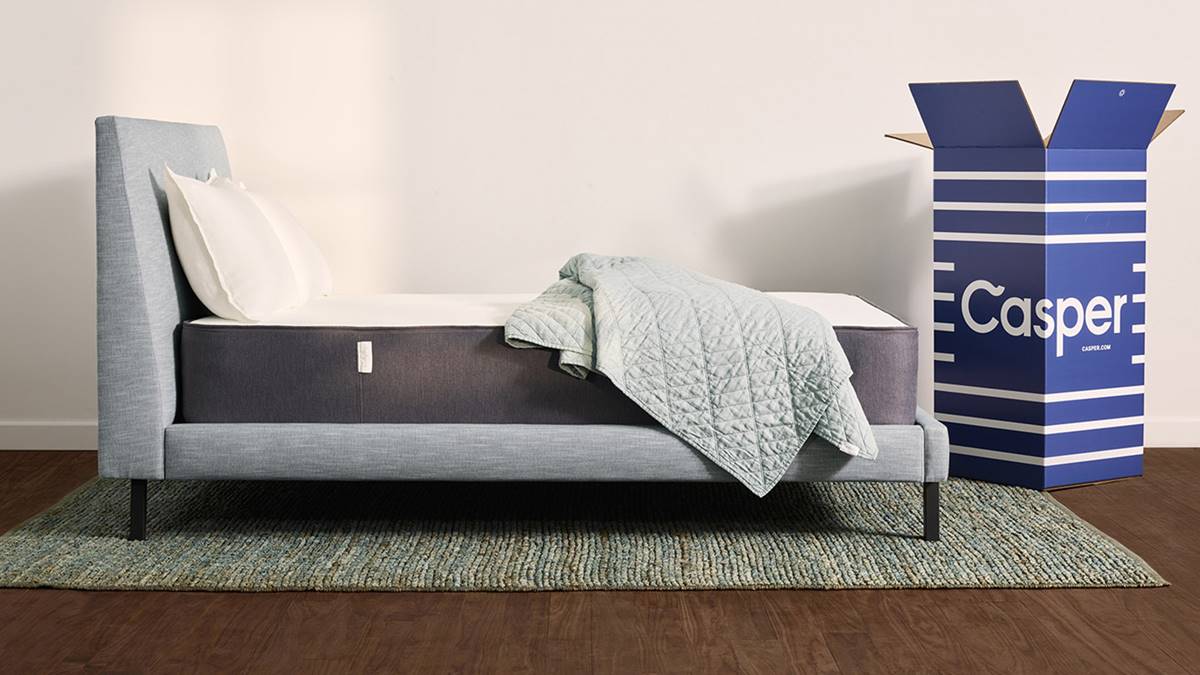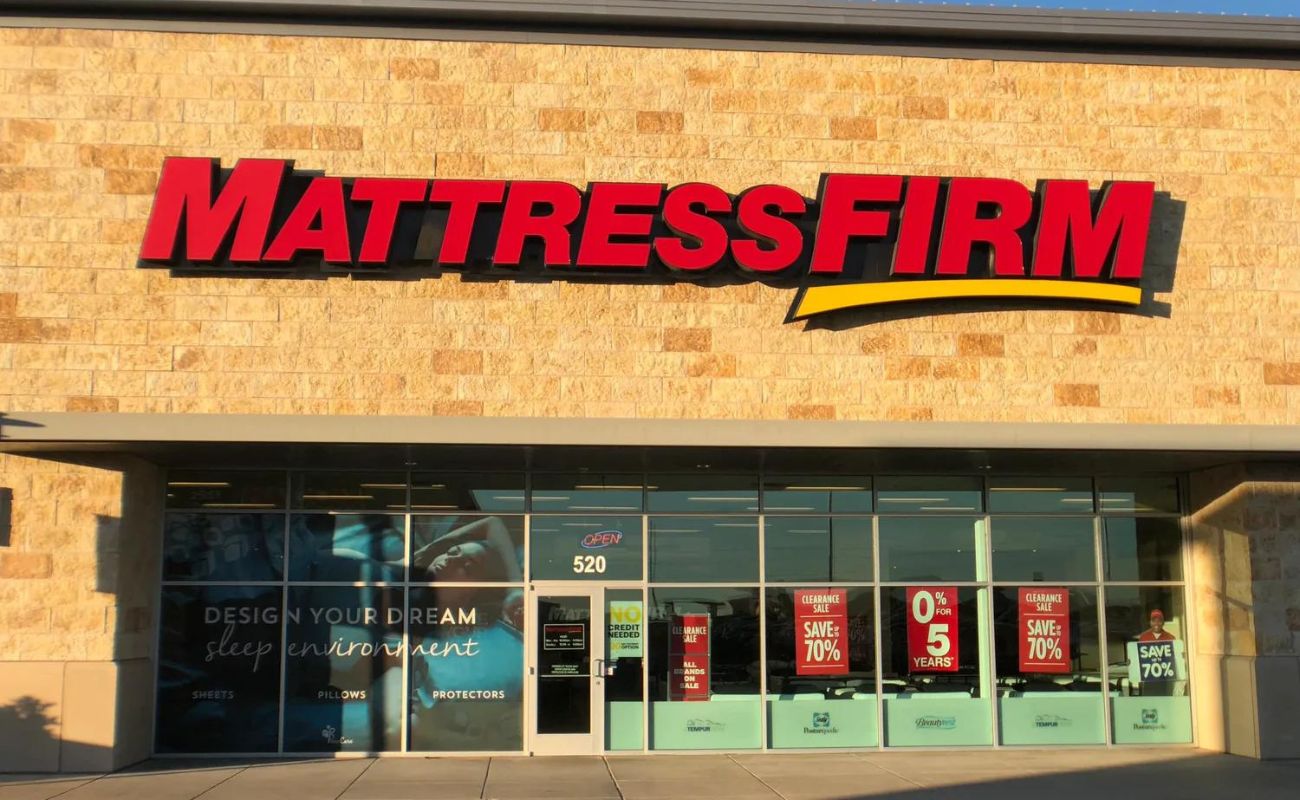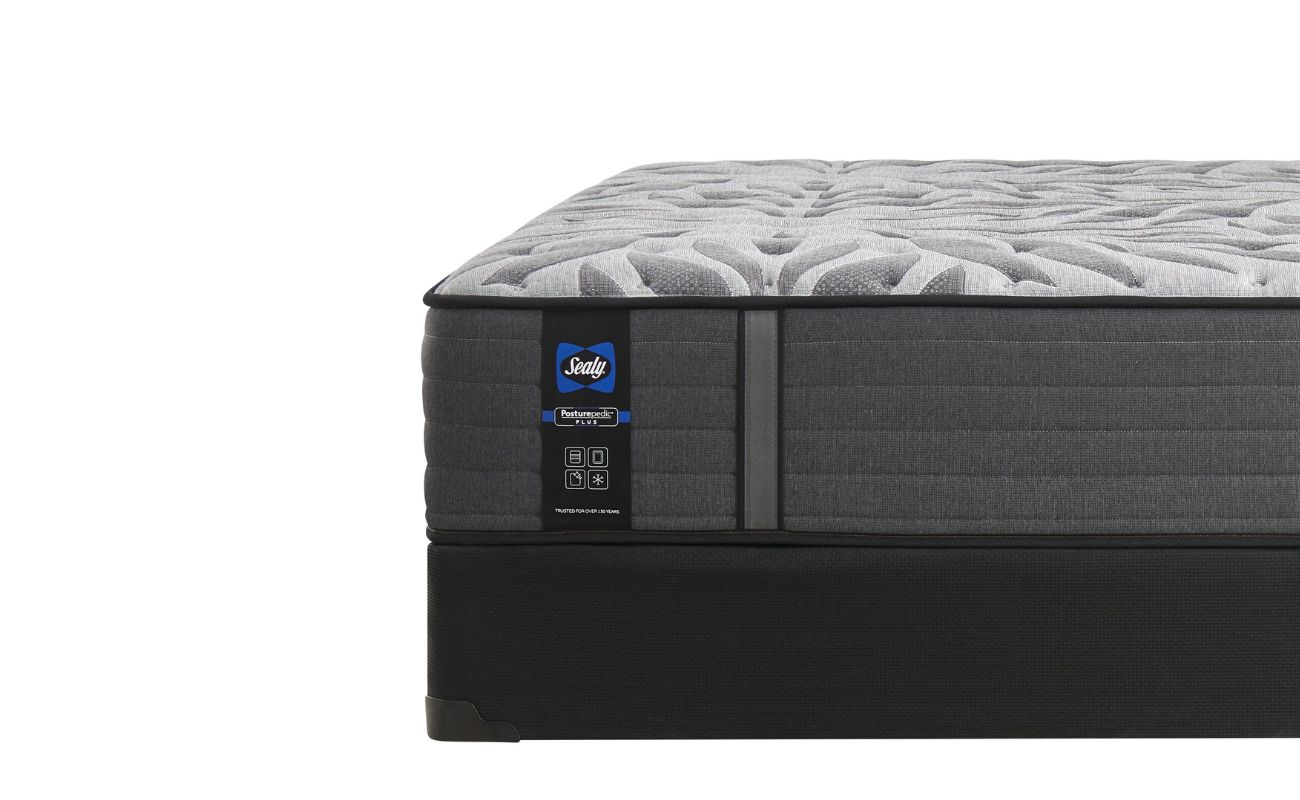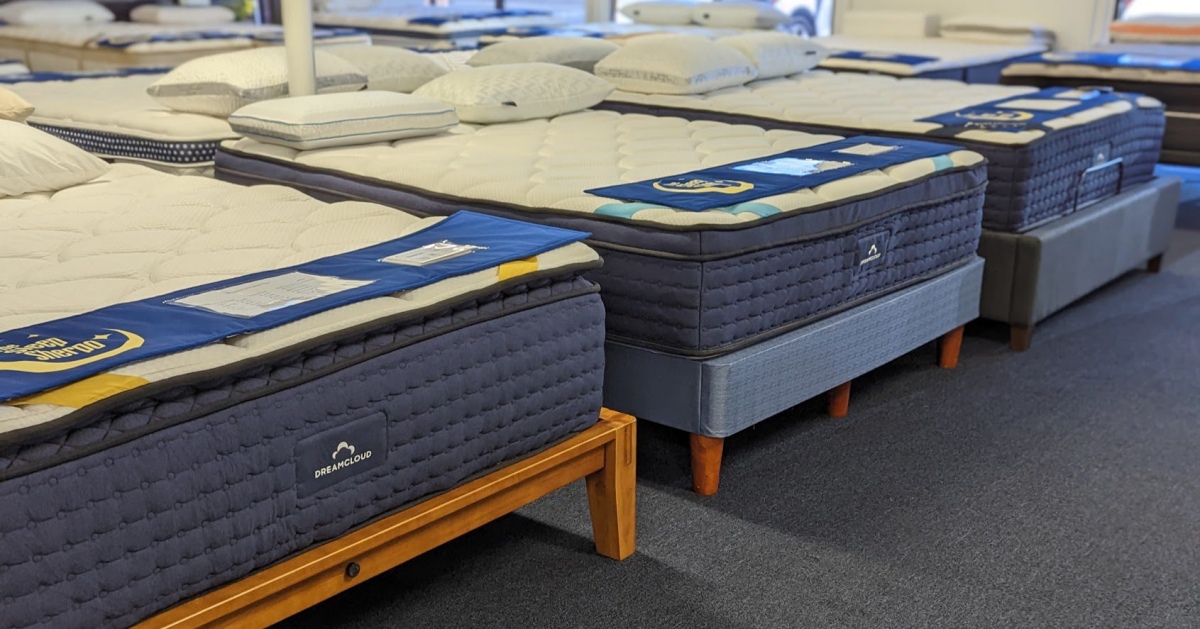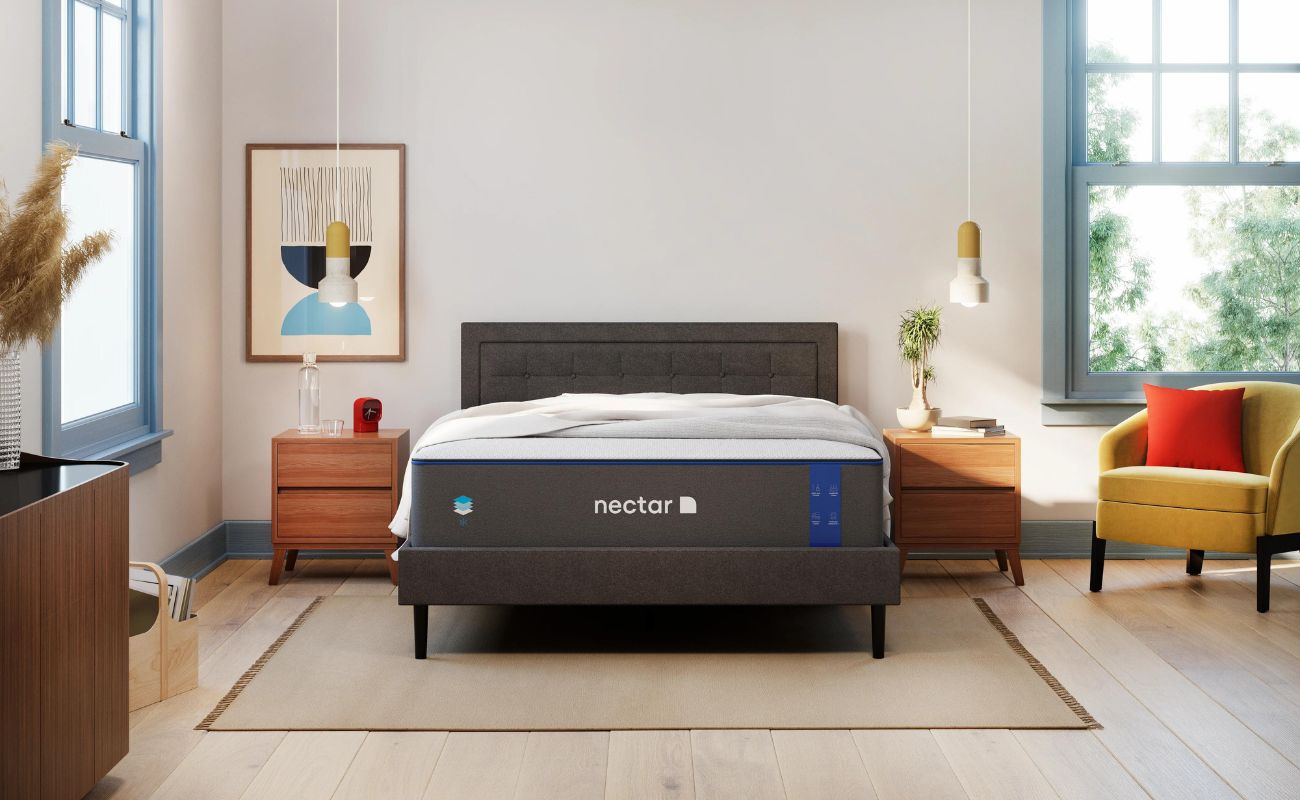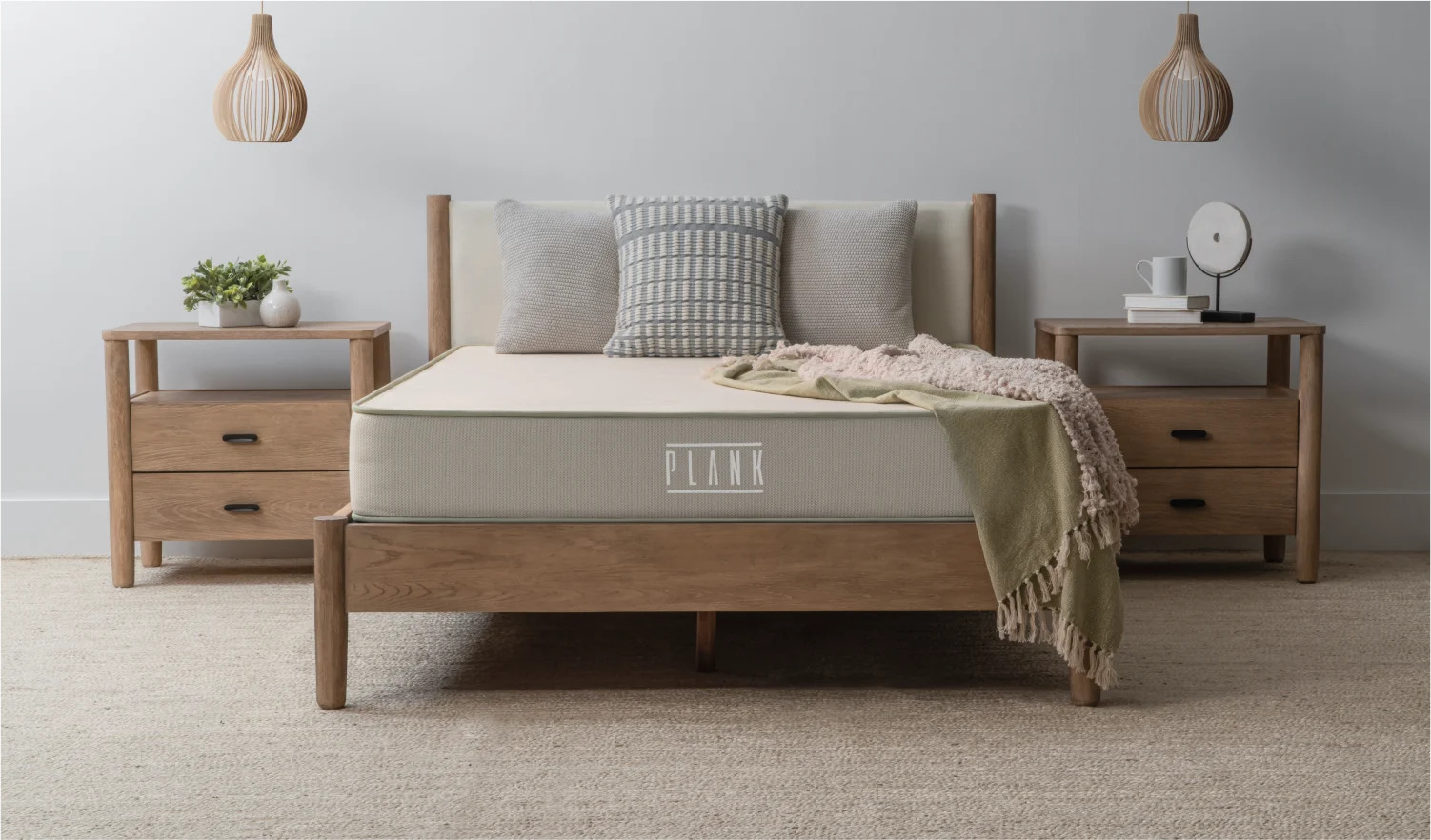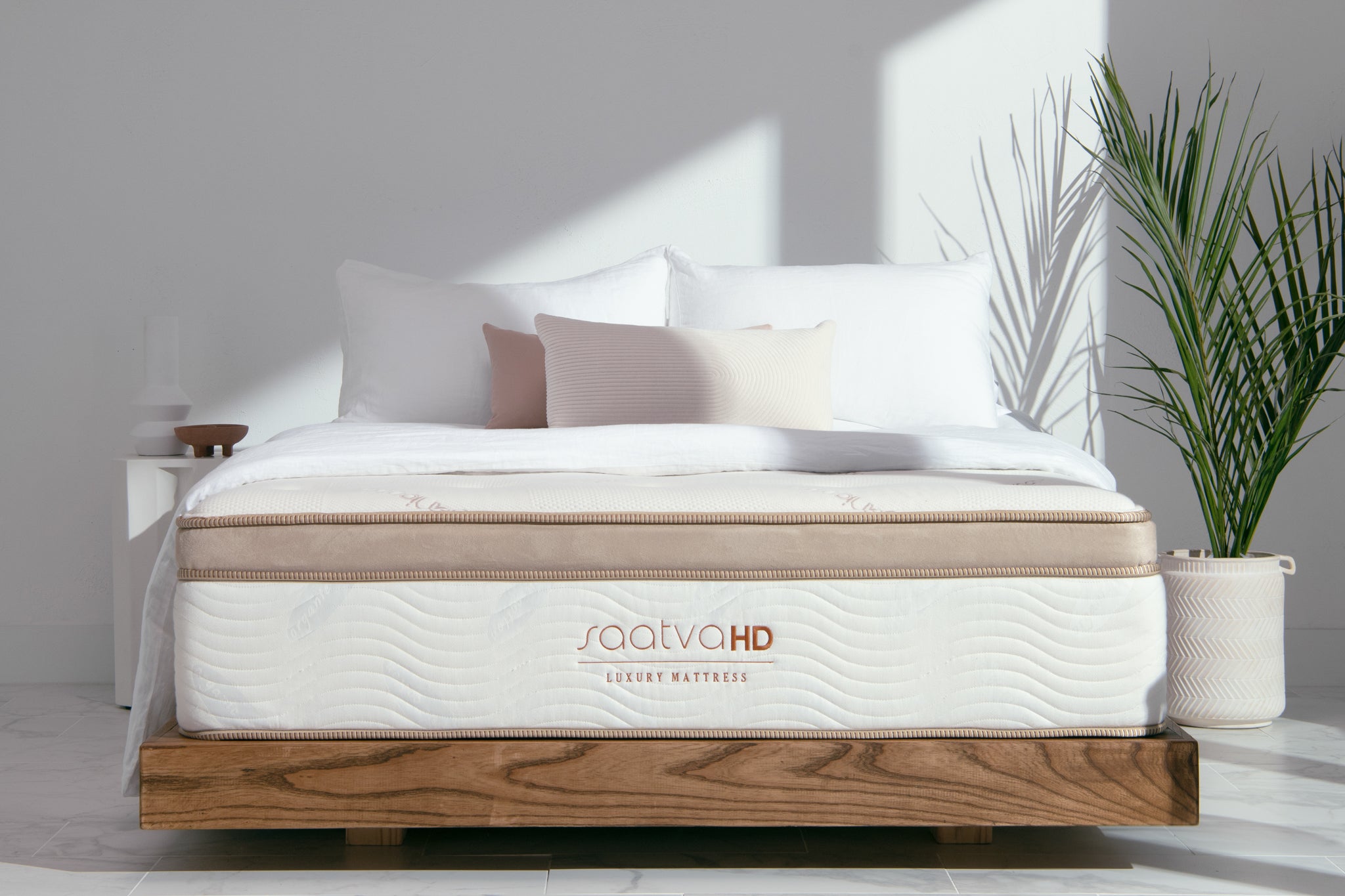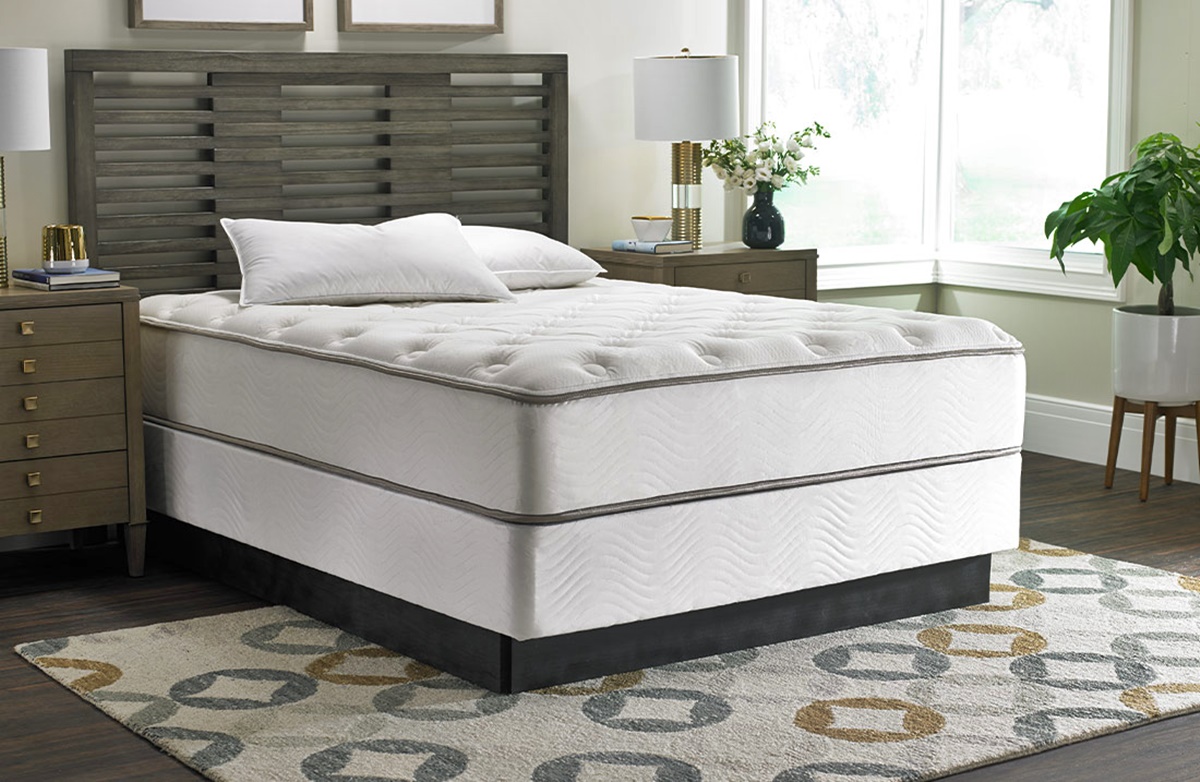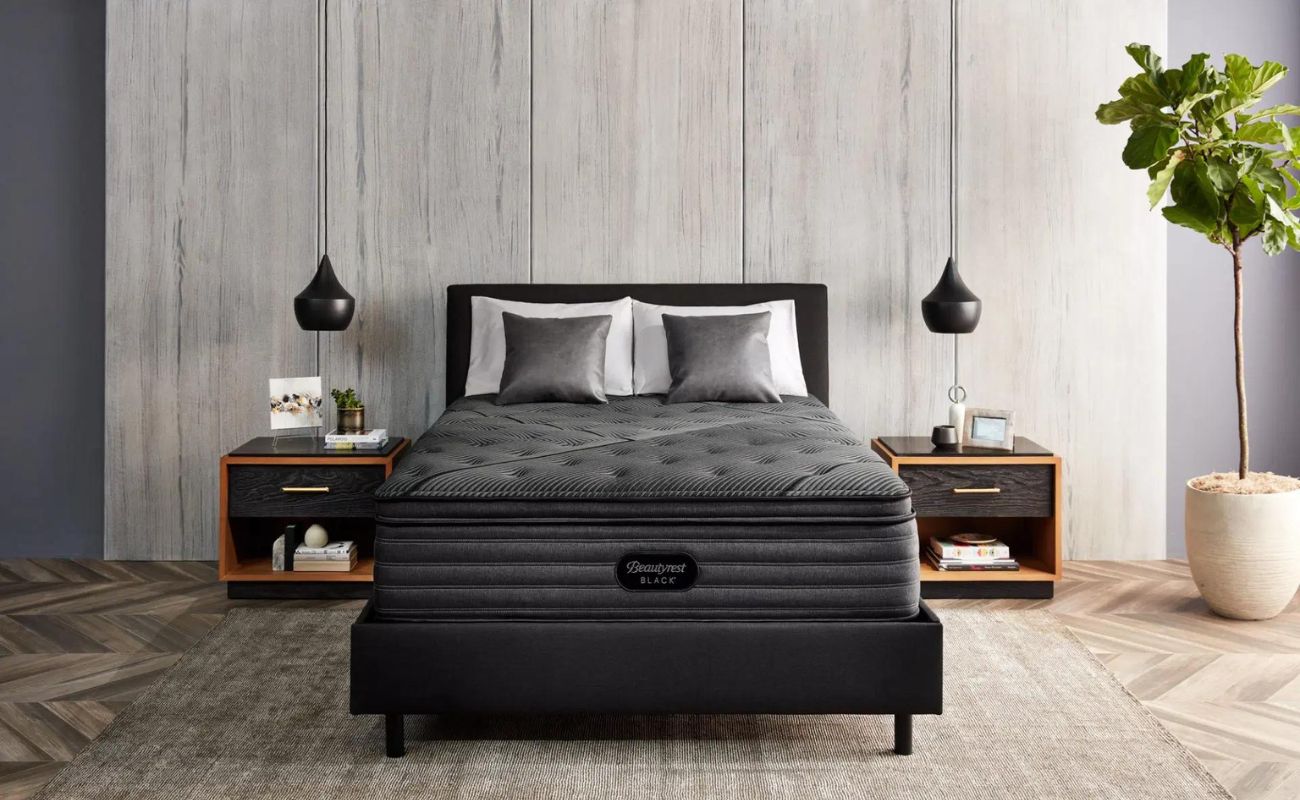Home>Furniture>Bedroom Furniture>Where To Store A Mattress
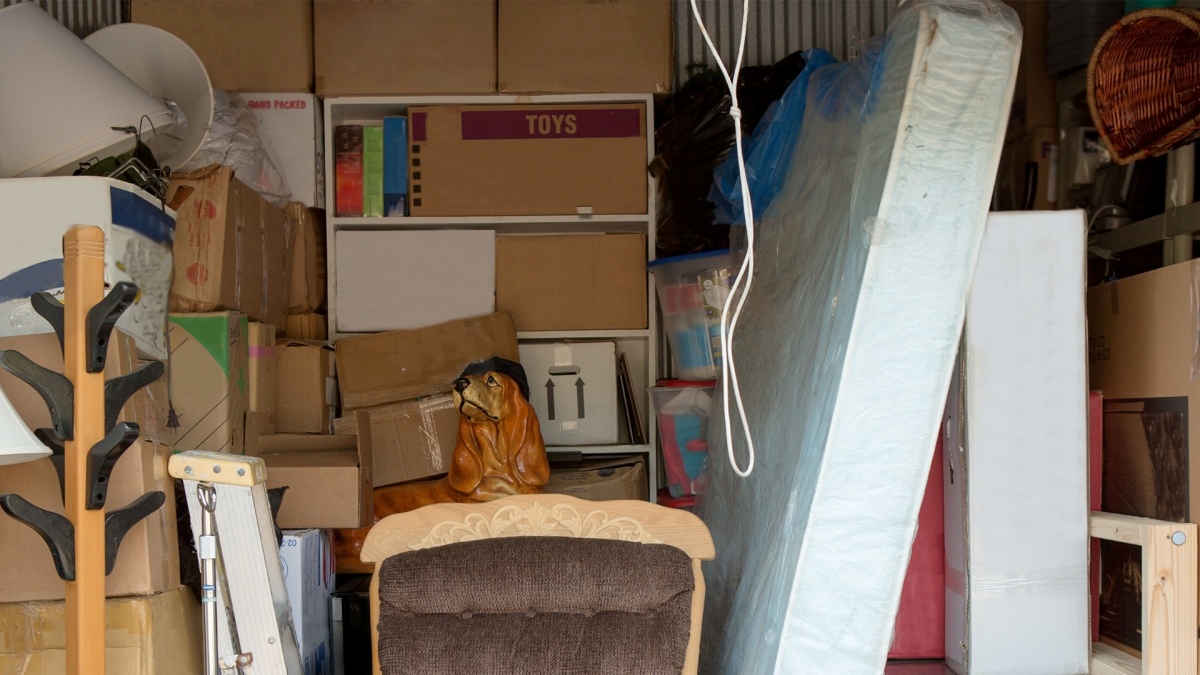

Bedroom Furniture
Where To Store A Mattress
Modified: October 20, 2024
Looking for the best storage options for your mattress? Discover where to store your mattress safely and conveniently with our bedroom furniture solutions.
(Many of the links in this article redirect to a specific reviewed product. Your purchase of these products through affiliate links helps to generate commission for Storables.com, at no extra cost. Learn more)
Introduction
When it comes to bedroom furniture, the mattress is undoubtedly the centerpiece. It’s where you spend a significant portion of your time, ensuring a good night’s sleep. However, there are instances when you may need to store your mattress temporarily or long-term. Maybe you’re moving to a new home, downsizing, or simply need extra space. Whatever the reason, finding the right storage solution for your mattress is essential to preserve its quality and longevity.
In this article, we will explore various storage options for your mattress and provide expert tips on how to properly store it. Whether you prefer storing it at home or opt for professional storage solutions, we’ve got you covered. So, let’s dive in and find the perfect storage spot for your beloved mattress.
Key Takeaways:
- Proper mattress storage is crucial for preserving its quality and longevity. Whether at home or in professional storage, cleanliness, protection from pests, and avoiding direct sunlight are key factors to consider.
- Elevating the mattress, using a protective cover, and regular inspections are essential for maintaining the mattress’s condition during storage. Professional storage solutions offer added security and convenience for long-term storage needs.
Read more: Where To Purchase Amerisleep Mattress
Storage Options at Home
When it comes to storing your mattress at home, there are a few options to consider. These options allow you to keep your mattress within easy reach while ensuring its safety and protection. Let’s explore some of the most common storage options at home:
- Closet: If you have a spacious closet with enough vertical clearance, it can be an ideal spot to store your mattress. Make sure to clean the closet thoroughly before placing the mattress inside to prevent dust and dirt accumulation. Additionally, ensure that the closet is well-ventilated to avoid moisture buildup.
- Garage: A garage can be a convenient storage space for your mattress, especially if you have ample room. It provides protection from the elements while keeping the mattress accessible. However, bear in mind that garages can be susceptible to temperature fluctuations, so it’s essential to regulate the climate to prevent damage.
- Basement: If you have a dry and well-maintained basement, it can serve as a suitable storage location for your mattress. Basements typically have a stable temperature and minimal exposure to sunlight, making them an ideal choice. Just ensure that the mattress is elevated from the ground to prevent moisture absorption.
- Attic: The attic is another storage option, but it should be considered with caution. Attics can experience extreme temperatures, which can potentially damage the mattress. If you choose to store your mattress in the attic, make sure it’s protected with a thick cover and regularly inspect it for any signs of damage or moisture.
- Spare Room: If you’re fortunate enough to have an extra room in your home, it can serve as the perfect storage space for your mattress. It provides a controlled environment and easy access whenever you need it. Just ensure the room is kept clean and dry to preserve the mattress’s quality.
Remember, when storing your mattress at home, it’s important to consider factors such as cleanliness, ventilation, and protection from moisture and pests. If your storage options at home aren’t suitable or if you prefer a more professional storage solution, there are other options available, which we’ll explore further in the next section.
Closet
When it comes to storing your mattress at home, using a closet can be a convenient option, especially if you have a spacious one with enough vertical clearance. Here are some tips for storing your mattress in a closet:
- Clean the closet: Before storing your mattress, it’s essential to clean the closet thoroughly. Remove any dust, dirt, or debris to ensure a clean storage environment. Vacuum the floor and wipe down the shelves and walls to eliminate any potential allergens or pests.
- Ensure proper ventilation: To prevent musty odors and moisture buildup, it’s crucial to ensure that the closet is well-ventilated. If your closet doesn’t have built-in ventilation, consider using a small fan or opening the closet doors occasionally to allow air circulation.
- Use a sturdy platform: Placing your mattress directly on the closet floor is not recommended, as it can be susceptible to moisture and pests. Instead, use a sturdy platform, such as a pallet or wooden boards, to elevate the mattress off the ground. This helps to prevent condensation and potential damage.
- Protective cover: Invest in a high-quality mattress cover or bag to protect your mattress from dust, stains, and potential critters. Make sure the cover is snugly fitted and completely sealed to provide maximum protection.
- Rotate and inspect: While in storage, it’s a good idea to rotate the mattress periodically to prevent any permanent indentations or sagging. Additionally, inspect the mattress regularly for any signs of damage, such as tears or pest infestations.
By following these tips, you can effectively store your mattress in a closet, keeping it safe and protected until you’re ready to use it again. Just make sure to choose a closet that has sufficient space and proper conditions to preserve the quality of your mattress over time.
Garage
Another storage option for your mattress at home is the garage. If you have ample space in your garage, it can serve as a convenient and easily accessible storage area. Here are some tips for storing your mattress in the garage:
- Clear the area: Before storing your mattress in the garage, clear the area and make sure there is enough space. Remove any items that can potentially damage or press against the mattress, such as tools or sharp objects.
- Regulate temperature: Garages can be susceptible to temperature fluctuations, which can have a negative impact on your mattress. If possible, regulate the temperature within the garage by using insulation or portable heaters and air conditioners.
- Raise it off the floor: It’s important to elevate your mattress off the garage floor to protect it from moisture. Use storage pallets or wooden boards to create a raised platform. This helps to prevent any potential water damage or condensation that can occur on concrete floors.
- Protective cover: Just like with other storage options, it’s essential to use a protective cover for your mattress in the garage. A durable mattress cover or bag will shield it from dust, dirt, and potential pests. Ensure that the cover is securely fastened to keep your mattress fully protected.
- Keep it away from direct sunlight: Exposure to direct sunlight can cause your mattress to fade and deteriorate over time. Avoid placing your mattress in direct sunlight while storing it in the garage. If there are windows in the garage, consider covering them or positioning the mattress away from the light.
- Regular inspections: Periodically inspect your mattress in the garage for any signs of damage or pest infestations. Check for tears, mold, or pest droppings, and take necessary steps if any issues are detected.
By following these guidelines, you can successfully store your mattress in the garage, ensuring it remains in good condition until you are ready to use it again. Just remember to create a clean and protected space within the garage and take steps to regulate the temperature and prevent moisture buildup.
Basement
If you have a basement, it can be an excellent storage option for your mattress. Basements typically provide a controlled environment with relatively stable temperatures, making them suitable for long-term storage. Here are some guidelines for storing your mattress in the basement:
- Ensure cleanliness: Before storing your mattress in the basement, clean the area thoroughly. Remove any dust, debris, or potential pests to create a clean and safe storage environment.
- Elevate from the ground: It’s important to keep your mattress elevated from the basement floor to prevent moisture absorption. Use wooden pallets or storage racks to create a raised platform for your mattress.
- Control humidity: Basements can sometimes be damp. To protect your mattress, use a dehumidifier to control the humidity levels and prevent moisture buildup. Maintaining a dry environment will help preserve the integrity of the mattress.
- Use a mattress cover: Invest in a high-quality mattress cover or bag to protect your mattress from dust, mildew, and potential pests. Make sure the cover is tightly secured and completely sealed to provide maximum protection.
- Keep away from windows: Position your mattress away from basement windows to avoid direct sunlight exposure. Sunlight can cause fading and damage to the mattress fabric over time.
- Inspect and rotate: Periodically inspect your mattress in the basement for any signs of damage or pest infestation. Additionally, rotate the mattress occasionally to prevent uneven compression and ensure longevity.
By following these tips, you can safely store your mattress in the basement, taking advantage of its cool and relatively stable environment. Just remember to create a clean, dry, and protected space for your mattress to keep it in optimal condition until you’re ready to use it again.
Read more: Where To Buy Therapedic Mattress
Attic
While the attic can be a convenient storage space, it’s important to consider some factors before deciding to store your mattress there. Attics can experience extreme temperatures and humidity levels, which can potentially damage your mattress. If you still choose to store your mattress in the attic, here are some guidelines to follow:
- Ensure insulation: Proper insulation is crucial in the attic to control temperature fluctuations. Insulate the area to the best of your ability to minimize heat in the summer and cold in the winter.
- Protect from dust: Attics tend to accumulate dust over time. Before storing your mattress, clean the attic space thoroughly and consider using dust covers or sheets to keep your mattress protected from dust and debris.
- Inspect for pests: Attics are commonly home to pests such as rodents and insects. Before storing your mattress, inspect the attic for any signs of infestation and take necessary measures to prevent pests from causing damage to your mattress.
- Use a mattress cover: Invest in a high-quality mattress cover or bag to protect your mattress from dust, dirt, and potential pests in the attic. Ensure that the cover is securely fastened and completely sealed to offer maximum protection.
- Rotate periodically: Rotate your mattress periodically while in the attic to prevent permanent indentations and sagging. This will help maintain the mattress’s shape during its time in storage.
- Monitor the condition: Regularly check on your mattress in the attic to ensure it remains in good condition. Look out for signs of damage, mold, or pest infestations. If any issues are identified, address them promptly.
Storing your mattress in the attic should be considered with caution due to the potential temperature and humidity fluctuations. If feasible, consider other storage locations such as a basement or spare room, which offer more stable and controlled environments. However, if the attic is your only option, follow these guidelines to protect your mattress as best as possible.
Spare Room
If you have a spare room in your home, it can be an ideal storage space for your mattress. Spare rooms often provide a controlled environment and easy access whenever you need to retrieve the mattress. Here are some considerations for storing your mattress in a spare room:
- Clear the room: Before storing your mattress, clear the spare room of any clutter or objects that could potentially damage the mattress. Ensure there is enough space for the mattress to lay flat and be easily accessible.
- Keep it clean: Thoroughly clean the spare room to create a dust-free and clean storage environment for your mattress. Vacuum the floor, wipe down surfaces, and consider using air fresheners to keep the room smelling fresh.
- Elevate the mattress: To prevent potential moisture issues, elevate the mattress off the floor using a sturdy platform. This will help to keep the mattress dry and prevent it from absorbing moisture from the ground.
- Use a mattress cover: Invest in a quality mattress cover or bag to protect your mattress from dust, dirt, and potential pests. Ensure that the cover is secure and fully sealed to provide maximum protection.
- Rotate occasionally: While in storage, periodically rotate the mattress to prevent permanent impressions or sagging in specific areas. This will help maintain its shape and prolong its lifespan.
- Monitor the room: Regularly inspect the spare room and the mattress for any signs of damage or pest infestation. Address any issues promptly to prevent further damage.
Storing your mattress in a spare room allows for easy access whenever you need it and provides a controlled environment. With proper cleaning and protection, your mattress can be stored in a spare room for an extended period without compromising its quality.
Professional Storage Solutions
If storing your mattress at home isn’t a viable option or if you prefer a more professional approach, there are several storage solutions available. These professional storage options provide additional security and peace of mind knowing that your mattress is being stored in a controlled and monitored environment. Here are some popular professional storage solutions:
- Self-Storage Units: Self-storage units offer a convenient and secure option for mattress storage. These units are typically located in secure facilities equipped with surveillance cameras and secure access codes. With various unit sizes available, you can find the perfect size to accommodate your mattress and other belongings.
- Moving Companies: Moving companies often offer storage services as part of their offerings. They can transport your mattress to their storage facility and keep it safe until you need it again. This option is especially beneficial if you’re already utilizing their moving services for other items.
- Furniture Storage Facilities: Furniture storage facilities specialize in storing larger items such as mattresses. These facilities have dedicated spaces designed to accommodate furniture, including mattresses. They provide climate-controlled environments to protect your mattress from temperature fluctuations and humidity.
When choosing a professional storage solution, consider factors such as location, security, climate control, and cost. It’s essential to research different options, read reviews, and visit the facilities if possible to ensure they meet your specific storage needs.
Professional storage solutions can offer added convenience, especially if you’re in a transitional phase, need long-term storage, or require extra security for valuable mattresses. However, keep in mind that there may be associated costs and restrictions, so be sure to consider these factors when making your decision.
Self-Storage Units
Self-storage units are a popular and convenient professional storage solution for storing your mattress and other belongings. These units are rented out to individuals and businesses who need extra space to store their items securely. Here’s what you need to know about using self-storage units for mattress storage:
- Security: Self-storage facilities prioritize the safety and security of your belongings. Most facilities are equipped with security measures such as surveillance cameras, gated access, and individual unit locks. This ensures that your mattress is protected from theft and unauthorized access.
- Flexible unit sizes: Self-storage units come in various sizes, allowing you to choose the appropriate size for your mattress. Whether you have a single mattress or multiple mattresses to store, you can find a unit that fits your specific needs.
- Climate control: Some self-storage facilities offer climate-controlled units, which can be beneficial for storing your mattress. These units regulate temperature and humidity levels, preventing damage caused by extreme temperature fluctuations or excess moisture.
- Accessibility: One of the advantages of self-storage units is that you can access your stored items whenever you need them. Most facilities provide 24/7 access or specific operating hours, allowing you to retrieve or add to your storage unit as required.
- Cost considerations: The cost of renting a self-storage unit can vary depending on factors such as location, unit size, and additional features like climate control. It’s important to compare prices and consider your budget when choosing a self-storage facility.
- Proper packing: When packing your mattress for storage in a self-storage unit, it’s advisable to use a mattress cover or bag to protect it from dust, dirt, and potential pests. Additionally, ensure that the mattress is adequately secured within the unit to prevent shifting or damage during transport.
Using a self-storage unit for mattress storage provides the peace of mind knowing that your mattress is stored securely and accessible whenever needed. Just make sure to choose a reputable facility that offers suitable security measures and the necessary amenities to protect your mattress.
When storing a mattress, it’s best to keep it flat in a dry, climate-controlled area to prevent mold and mildew. Avoid storing it upright or in a damp environment to maintain its quality.
Read more: Where Are Simmons Mattresses Made
Moving Companies
If you’re planning a move or need assistance with transporting your mattress to a storage facility, hiring a moving company can be a convenient option. Many moving companies also offer storage services as part of their offerings. Here’s what you should know about using moving companies for mattress storage:
- Convenience and efficiency: Moving companies can handle the entire process of packing, transporting, and storing your mattress. Their experienced movers will ensure that your mattress is properly handled and protected throughout the process, saving you time and effort.
- Specialized equipment: Moving companies have the necessary equipment to handle and transport mattresses safely. They use techniques such as wrapping the mattress in protective blankets and using straps to secure it during transit, minimizing the risk of damage.
- Storage facility: Moving companies typically have their own storage facilities where they can store your mattress. These storage facilities are often equipped with security measures such as surveillance cameras and gated access to ensure the safety of your belongings.
- Flexible storage durations: Whether you need short-term or long-term storage, moving companies can accommodate your needs. They understand that everyone’s storage requirements are different and can provide customizable storage solutions based on your specific timeframe.
- Insurance coverage: Reputable moving companies will offer insurance coverage for your mattress while it’s in their care. This gives you added peace of mind knowing that your mattress is protected financially in the event of any unforeseen circumstances.
- Cost considerations: The cost of using a moving company for mattress storage will depend on various factors, including the distance of the move, the size of the mattress, and the duration of storage. It’s recommended to obtain quotes from multiple companies to compare prices and services.
Using a moving company for mattress storage can simplify the storage process, especially if you’re already utilizing their moving services. The professional expertise and specialized equipment they bring to the table ensure that your mattress is stored safely and securely until you’re ready to retrieve it.
Furniture Storage Facilities
Furniture storage facilities specialize in storing larger items, including mattresses. These facilities are designed to accommodate furniture and provide secure and controlled storage environments. Here’s what you need to know about using furniture storage facilities for mattress storage:
- Dedicated storage spaces: Furniture storage facilities have dedicated spaces specifically designed to store furniture, including mattresses. These spaces are often equipped with racks or shelves to keep mattresses organized and protected.
- Climate control: Many furniture storage facilities offer climate-controlled units, maintaining optimal temperature and humidity levels. This is particularly beneficial for preserving the integrity of mattresses, as extreme temperature fluctuations or excess moisture can cause damage.
- Security measures: Furniture storage facilities prioritize the security of your belongings. They typically have security features such as surveillance cameras, secure access points, and in some cases, on-site security personnel to ensure the safety of stored items, including your mattress.
- Accessibility: Depending on the facility, you may have restricted or limited access to your stored mattress. Some facilities may require prior notice or appointments for accessing your unit. It’s important to check the accessibility policies and choose a facility that aligns with your needs.
- Proper packaging: When storing your mattress at a furniture storage facility, ensure it is properly packaged to protect it from dust, dirt, and potential pests. Use a mattress cover or bag and securely seal it to provide an extra layer of protection.
- Professional handling: Furniture storage facilities often have trained staff who handle the loading, unloading, and storage of your mattress. This reduces the risk of damage during the storage process and ensures that your mattress is stored safely and efficiently.
Utilizing a furniture storage facility offers the advantage of dedicated storage spaces designed to protect and preserve your mattress. With climate-controlled units and enhanced security features, you can have peace of mind knowing that your mattress will remain in excellent condition until you’re ready to retrieve it.
Tips for Proper Mattress Storage
Proper storage is crucial for preserving the quality and longevity of your mattress. Whether you’re storing it at home or utilizing professional storage solutions, here are some essential tips to ensure your mattress remains in excellent condition:
- Clean and dry: Before storing your mattress, clean it thoroughly to remove any dirt or stains. Allow it to dry completely, as moisture can lead to mold and mildew growth during storage.
- Use a mattress cover: Invest in a high-quality mattress cover or bag to protect your mattress from dust, dirt, and potential pests. Choose a cover that fits snugly and is made of breathable material to allow for proper airflow.
- Elevate from the ground: To prevent moisture absorption, elevate your mattress from the ground. Use wooden pallets, storage racks, or a raised platform to keep the mattress off the floor.
- Avoid direct sunlight and moisture: Store your mattress in a cool, dry area away from direct sunlight. Prolonged exposure to sunlight can cause fading and deterioration of the fabric. Additionally, ensure that the storage space is free from moisture or excessive humidity to prevent mold and mildew growth.
- Regularly check for pest infestations: Inspect your mattress regularly for any signs of pests, such as bed bugs or rodents. Look for droppings, eggs, or other signs of infestation. If detected, take immediate action to address the issue and prevent further damage.
- Avoid folding or bending: It’s important to avoid folding or bending your mattress during storage, as this can cause permanent damage. If necessary, store it in a position where it remains flat and supported.
- Rotate periodically: To prevent permanent sagging or compression in specific areas, rotate your mattress occasionally while in storage. This helps to distribute the weight evenly and maintain its shape.
- Label and organize: If you’re storing multiple mattresses or other items, label each one and keep an inventory list. This will make it easier to locate specific mattresses when needed and ensure efficient organization.
By following these tips, you can ensure that your mattress remains in optimal condition during storage. Taking the necessary steps to keep it clean, protected, and properly stored will extend its lifespan and ensure that you can enjoy a comfortable sleep when you’re ready to use it again.
Clean and Dry
Before storing your mattress, it’s crucial to clean it thoroughly and ensure it is completely dry. This is important for maintaining the mattress’s hygiene and preventing the growth of mold and mildew during storage. Here are some tips for cleaning and drying your mattress:
- Vacuum: Start by vacuuming the entire surface of the mattress using an upholstery attachment. This will remove any dust, dirt, or debris that may have accumulated. Pay attention to the edges, seams, and corners of the mattress.
- Spot cleaning: If there are any stains or spills on the mattress, spot clean them using a mild detergent mixed with warm water. Gently dab the stained area with a clean cloth or sponge, taking care not to saturate the mattress. Avoid using harsh chemicals or excessive moisture, as they can damage the mattress’s fibers.
- Deodorize: To eliminate any lingering odors, sprinkle baking soda over the entire surface of the mattress. Let it sit for a few hours to absorb odors, then vacuum it off. Baking soda is a natural deodorizer that will leave your mattress smelling fresh.
- Allow for sufficient drying time: After cleaning, it’s crucial to let your mattress dry completely before storing it. Moisture can lead to the growth of mold and mildew, causing unpleasant odors and potential damage to the mattress. Place the mattress in a well-ventilated area with good air circulation, or use fans to expedite the drying process.
- Avoid direct sunlight: When drying your mattress, avoid exposing it to direct sunlight. Prolonged exposure to sunlight can cause the mattress’s materials to deteriorate and fade. Instead, choose a shaded area or use indirect natural light for drying.
- Check for moisture: Before storing your mattress, ensure that it is completely dry. Check for any signs of moisture or dampness by running your hand over the surface and inspecting closely. If you detect any moisture, continue drying until it is completely gone.
By cleaning your mattress thoroughly and ensuring it is dry, you’ll prevent the growth of mold, mildew, and unpleasant odors during storage. Taking the time to maintain the cleanliness of your mattress before storage will ensure it remains in optimal condition and ready for use when you retrieve it.
Read more: Where Is Nolah Mattress Made
Use a Mattress Cover
Using a mattress cover is essential for protecting your mattress during storage. A high-quality mattress cover provides an extra layer of defense against dust, dirt, moisture, and pests. Here’s why you should use a mattress cover and some key considerations:
- Dust and dirt protection: Even in storage, your mattress can accumulate dust and dirt particles. A mattress cover acts as a barrier, preventing these particles from settling on the surface of your mattress. This helps to maintain its cleanliness and freshness.
- Moisture prevention: Moisture can be detrimental to your mattress, leading to mold, mildew, and unpleasant odors. A mattress cover made of waterproof or moisture-resistant material acts as a shield, preventing moisture from seeping into the mattress.
- Pest resistance: Mattress covers also offer protection against pests such as bed bugs, dust mites, and other small insects. These covers are typically designed with tight weaves or specialized fabrics that prevent pests from entering or nesting within the mattress.
- Breathability: When selecting a mattress cover, opt for one that is breathable. Look for covers made from materials such as cotton or bamboo, as they allow air to circulate through the mattress. This helps prevent the buildup of trapped heat and moisture.
- Proper fit: Ensure that the mattress cover you choose is the correct size for your mattress. It should fit snugly without being too tight or too loose. A well-fitted cover will provide optimal protection, as it will effectively encapsulate the entire mattress.
- Secure closure: Look for a mattress cover with a secure closure or zipper system. This will ensure that the cover remains tightly sealed around the mattress, preventing dust, pests, and moisture from entering.
- Regular cleaning: It’s important to regularly clean your mattress cover. Follow the manufacturer’s instructions for washing and drying. This will help maintain the cover’s effectiveness in providing protection for your mattress.
By using a mattress cover, you can safeguard your mattress from dust, dirt, moisture, and pests during storage. Select a high-quality cover that fits your mattress properly and is made from breathable materials. With proper protection, your mattress will remain in excellent condition until you’re ready to use it again.
Elevate from the Ground
Elevating your mattress from the ground during storage is an important step to protect it from potential moisture and damage. By keeping your mattress off the ground, you can prevent moisture buildup and reduce the risk of pests. Here’s why and how to elevate your mattress:
- Mitigate moisture: Storing your mattress directly on the ground can expose it to moisture from the floor. This can lead to mold, mildew, and the deterioration of the mattress materials. Elevating the mattress helps to minimize contact with moist surfaces.
- Prevent pest infestations: Pests, such as rodents and insects, are more likely to access your mattress if it is stored on the ground. By lifting it off the ground, you create a barrier that makes it harder for pests to reach the mattress and potentially cause damage.
- Wooden pallets: One of the most common and cost-effective ways to elevate your mattress is by using wooden pallets. Place the pallets on the floor and ensure they are stable. The number of pallets you need depends on the size and weight of your mattress.
- Storage racks or platforms: If using pallets is not suitable for your storage space, consider using storage racks or platforms designed specifically for mattress storage. These racks or platforms provide sturdy support and keep the mattress elevated throughout its storage period.
- Even weight distribution: When elevating your mattress, ensure that the weight is evenly distributed. This helps to prevent any unnecessary strain or pressure on specific areas of the mattress.
- Airflow and ventilation: Elevating the mattress allows for better airflow and ventilation, reducing the chances of trapped moisture. This is particularly important if you’re storing the mattress in a humid environment.
- Regular checks and maintenance: While the mattress is elevated, periodically check for any signs of damage, pests, or mold. Inspect the area beneath the mattress as well to ensure there are no pest nests or debris accumulating.
Elevating your mattress from the ground not only protects it from moisture and pests but also promotes better airflow and ventilation. Whether using wooden pallets or storage racks, maintaining proper mattress elevation during storage is essential for preserving its quality until you’re ready to use it again.
Avoid Direct Sunlight and Moisture
Protecting your mattress from direct sunlight and moisture during storage is crucial for preserving its quality and prolonging its lifespan. Exposure to sunlight can cause fading and deterioration of the materials, while moisture can lead to mold, mildew, and unpleasant odors. Here’s how to shield your mattress from these elements:
- Select a suitable storage location: Choose a storage area away from windows or direct sunlight to minimize the amount of light exposure your mattress receives. If possible, opt for a cool, dry, and dark area such as a basement, closet, or storage unit.
- Use curtains or blinds: If your storage space has windows, cover them with curtains or blinds to block out sunlight. This helps prevent UV rays from reaching the mattress and causing damage.
- Utilize blackout or UV-blocking covers: Consider using blackout curtains or UV-blocking covers specifically designed to shield your mattress from sunlight. These covers provide an extra layer of protection, minimizing the effects of direct sunlight exposure.
- Avoid storage in damp areas: Moisture can seep into your mattress and cause mold, mildew, and unpleasant odors. Choose a storage location that is dry and well-ventilated to prevent moisture buildup. Take extra precautions if storing in areas prone to dampness, such as basements or garages.
- Use moisture absorbers: To further protect against moisture, place moisture absorbers such as silica gel packets or desiccant bags near your mattress. These absorb excess moisture in the air and help maintain a dry environment within the storage space.
- Climate-controlled storage: If you have the option, consider using a climate-controlled storage unit. These units regulate temperature and humidity levels, providing optimal conditions that safeguard your mattress from extreme temperature fluctuations and excess moisture.
- Regularly inspect for moisture: During storage, periodically check your mattress for any signs of moisture or condensation. Look for damp spots, discoloration, or a musty smell. If moisture is detected, take steps to eliminate it and ensure that the mattress is fully dry before continuing storage.
By avoiding direct sunlight and moisture, you can protect your mattress from potential damage and maintain its quality. Whether through proper storage location selection, utilizing covers or curtains, or using moisture-absorbing materials, taking these precautions will help ensure your mattress remains clean, fresh, and in great condition throughout its storage period.
Regularly Check for Pest Infestations
Pests, such as bed bugs, rodents, and insects, can cause significant damage to your mattress during storage. To safeguard your mattress from pest infestations, it’s important to regularly check for any signs of pests and take preventive measures. Here’s how to stay vigilant against pests during mattress storage:
- Inspect for signs of pests: Regularly examine your mattress for any visible signs of pests or pest activity. Look for droppings, shed skins, eggs, or any small crawling insects on or around the mattress.
- Keep the storage area clean: Maintaining a clean storage space is crucial in preventing pest infestations. Regularly clean the storage area, sweeping or vacuuming any dust, dirt, or debris. Clear any potential food sources and remove clutter that may attract pests.
- Seal any cracks or crevices: Seal any cracks or openings in the storage area, including gaps in walls or floors, to prevent pests from entering. Use caulk or other appropriate sealants to block potential entry points.
- Use pest deterrents: Consider placing pest deterrents near your mattress, such as natural repellents or pest control devices. These can help to discourage pests from approaching or nesting near your mattress.
- Avoid storing near infested areas: If you suspect or have experienced pest infestations in the past, avoid storing your mattress near areas that are prone to pests. This includes areas with known rodent or insect activity.
- Consider pest control treatments: Before storing your mattress, you may want to consider professional pest control treatments to eliminate any existing pests. This is particularly important if you’ve had previous pest infestations or if you’re storing the mattress for an extended period.
- Keep the mattress elevated: Elevating your mattress as mentioned earlier not only helps prevent moisture damage but also makes it more difficult for pests to access. By keeping your mattress off the ground, you reduce the risk of pests nesting or hiding in or around the mattress.
- Regularly monitor and rotate: While your mattress is in storage, periodically inspect it for any signs of pests, even if there were no initial signs. Additionally, rotate the mattress occasionally to disturb any potential pest hiding places and deter infestations.
By regularly checking for pest infestations and taking preventive measures, you can protect your mattress from pests and their associated damage. Stay vigilant, keep the storage area clean and sealed, and take proactive steps to prevent pests from accessing your mattress during its storage period.
Read more: Where To Try Avocado Mattress
Conclusion
Proper mattress storage is essential for preserving its quality and ensuring its longevity. Whether you’re storing your mattress at home or utilizing professional storage solutions, following the right practices will help protect your investment and keep your mattress in excellent condition. Here’s a summary of the key points to remember:
- Consider storage options at home such as closets, garages, basements, attics, or spare rooms.
- Professional storage solutions like self-storage units, moving companies, and furniture storage facilities offer added security and convenience.
- Clean your mattress thoroughly and ensure it is completely dry before storage to prevent mold, mildew, and unpleasant odors.
- Use a high-quality mattress cover or bag to protect your mattress from dust, dirt, moisture, and pests.
- Elevate your mattress from the ground using wooden pallets, storage racks, or platforms to prevent moisture absorption and pest infestations.
- Avoid storing your mattress in direct sunlight and select a storage location that is cool, dry, and well-ventilated.
- Regularly check for signs of pests and take preventive measures to keep your mattress pest-free.
Remember to follow these guidelines and adapt them according to your specific storage needs and circumstances. By implementing proper storage practices, you can ensure that your mattress remains clean, protected, and ready for use whenever you retrieve it from storage.
Whether you’re storing your mattress for a short period or an extended duration, taking the time and effort to properly store it will pay off in the long run. By protecting your mattress from factors like sunlight, moisture, pests, and damage, you can ensure that it remains in great condition and provides you with many more nights of restful sleep in the future.
Frequently Asked Questions about Where To Store A Mattress
Was this page helpful?
At Storables.com, we guarantee accurate and reliable information. Our content, validated by Expert Board Contributors, is crafted following stringent Editorial Policies. We're committed to providing you with well-researched, expert-backed insights for all your informational needs.
